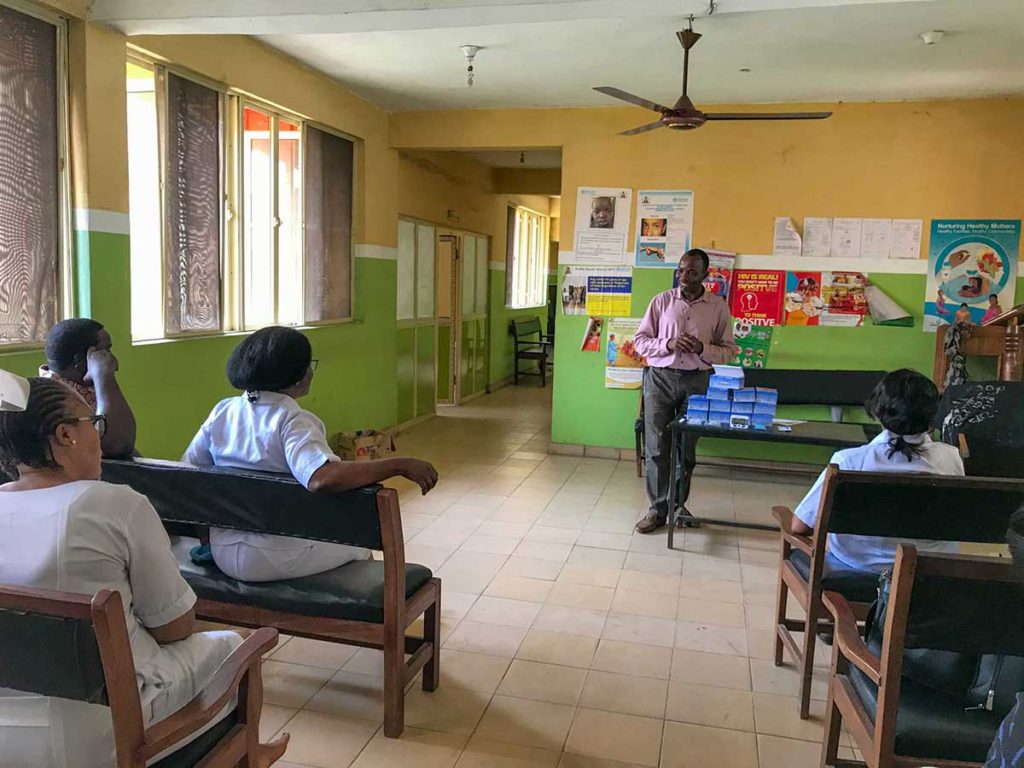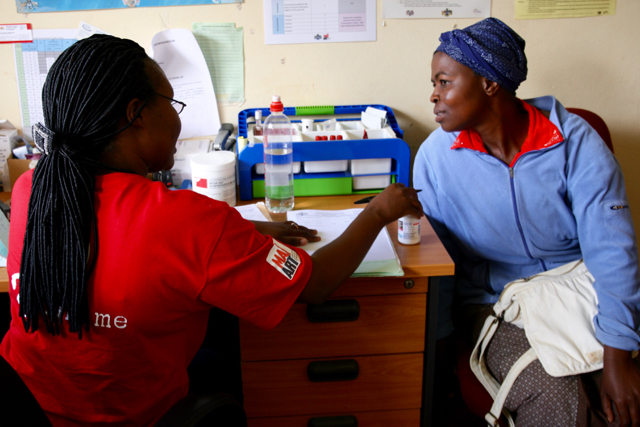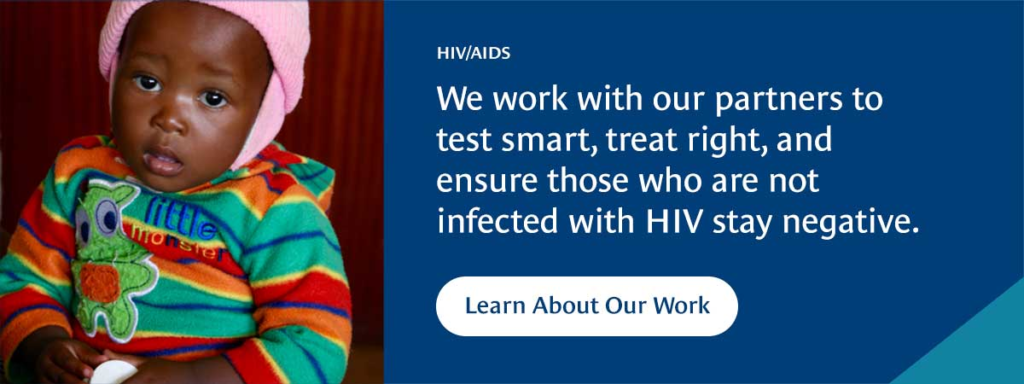This World AIDS Day, the World Health Organization (WHO) has asked everyone to consider the growing inequalities in access to essential HIV services that many countries face.
In a year defined by COVID-19, it is not difficult to find examples. The global HIV response fell short of its goals. However, the global health community has also demonstrated incredible resilience—despite the challenges the pandemic introduced—by adapting to service interruptions and expanding access to treatment, prevention, and diagnostics, as we laid out in our recent annual HIV Market Report.
Today, we are sharing several examples of that resilience and the work that CHAI and our government, community, and donor partners are doing to close the equity gap for people living with HIV in low- and middle-income countries.
Cheaper RDT for syphilis and HIV targets pregnant people

While HIV screening during pregnancy is routine in many countries, syphilis screening and treatment, which is also recommended during pregnancy, is low across sub-Saharan Africa and parts of Asia. To increase syphilis testing and treatment coverage, WHO recommends that countries use a two-in-one rapid diagnostic test that can detect both HIV and syphilis at the same time. However, the high price of these products has limited adoption until now.
A new partnership between MedAccess, CHAI, and SD Biosensor promises to change that. For the first time, a WHO prequalified dual HIV/syphilis test will be available for less than US$1. Over 100 countries, which account for 98 percent of the global congenital syphilis burden and 93 percent of the global HIV burden, will be able to access this new price, making syphilis testing more accessible to pregnant people and improve the delivery of care by integrating two tests into one…read more.
Child-friendly HIV treatment hits ground in six African countries

Most of the nearly two million children living with HIV are in low- and middle-income countries. Yet only 54 percent of these children are diagnosed and on treatment. A lack of medicines designed specifically for them has often meant the youngest patients cannot take their medication properly.
However, exactly one year ago, Unitaid and CHAI announced a groundbreaking deal to see the very best treatment made available to the youngest children for the first time. The new strawberry-flavored 10mg scored, dispersible formulation of pediatric dolutegravir (DTG) began rolling out in May to patients in Benin, Kenya, Malawi, Nigeria, Uganda, and Zimbabwe. Today, more than 30 countries have plans to procure and roll out the medication…read more.
World AIDS Day Webinar
Join the HIV team on Dec. 1, 2021 at 8:30am EST / 3:30pm CAT for the webinar Transforming HIV treatment for children. The webinar will discuss early learnings from pediatric DTG 10mg introduction in low- and middle-income countries. Register for the webinar here.
Affordable second-line treatment to reduce cost of therapy, improve outcomes for adults living with HIV

Darunavir is a best-in-class HIV medication that’s been widely used in high-income countries since its US Food and Drug Administration (FDA) approval in 2006 due to its potency and tolerability. However, despite its benefits, its use has been limited in low- and middle-income countries due to a lack of an affordable, generic formulation—representing a large equity gap.
To address this gap, earlier this year, Unitaid and CHAI announced an agreement with pharmaceutical company Hetero Labs LTD to develop a generic version of DRV/r, which will be available for US$210 per patient per year, finally making this best-in-class medicine available to patients struggling with sub-optimal second-line treatment options…read more.
Best-in-class second and third line treatment being developed for children

Second- and third-line therapies are critical to treat children living with HIV when first-line treatments may not be an option due to medication resistance or intolerance.
However, an affordable, generic pediatric version of the best-in-class second-line HIV treatment DRV/r is still not available. A partnership between Unitaid, CHAI, and Laurus Labs announced earlier this year aims to change that.
The partnership will accelerate the development, commercialization, and registration of DRV/r for children and ultimately impact over 100,000 children living with HIV to help them lead healthier, more fulfilling lives…read more.






